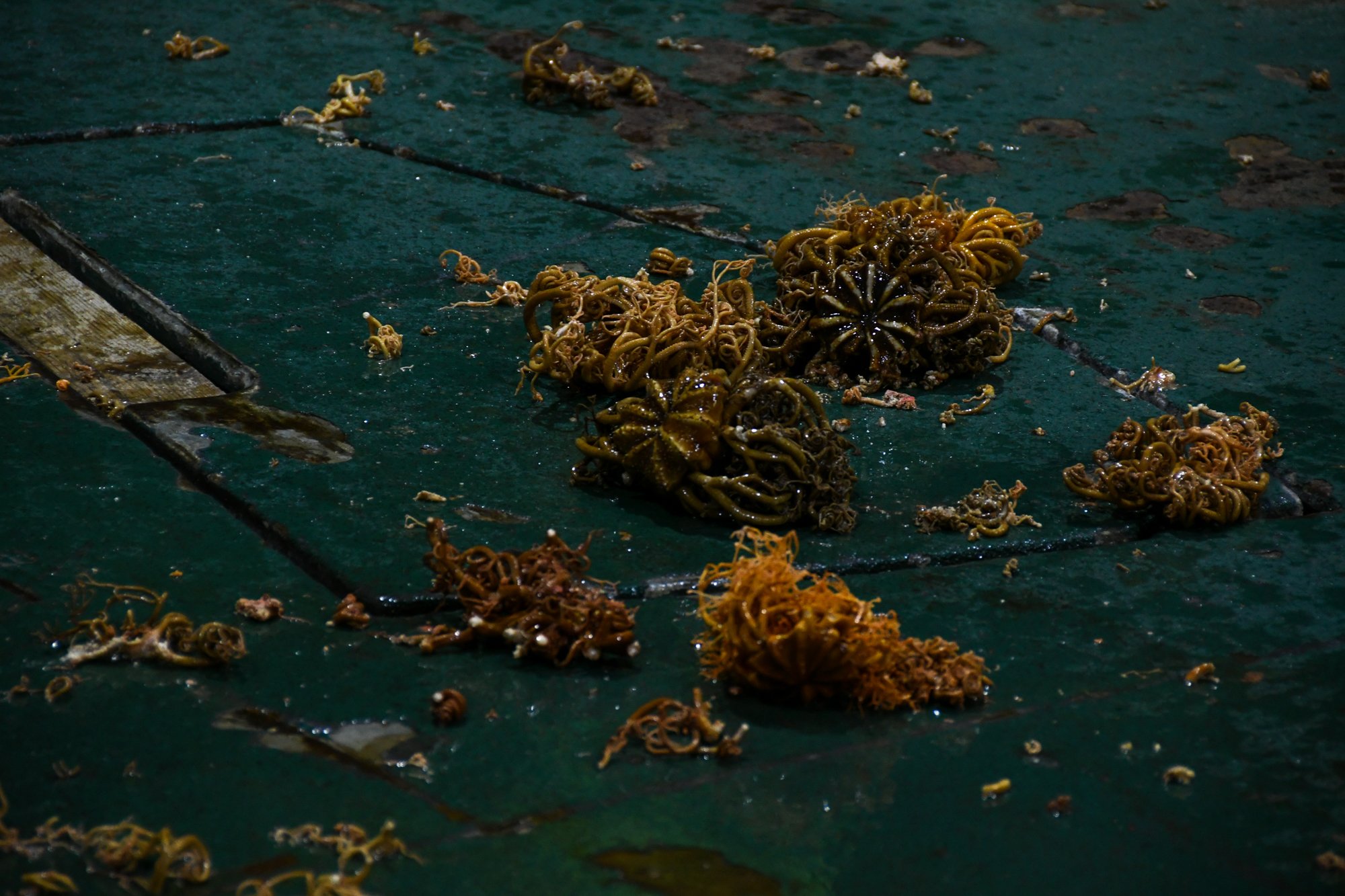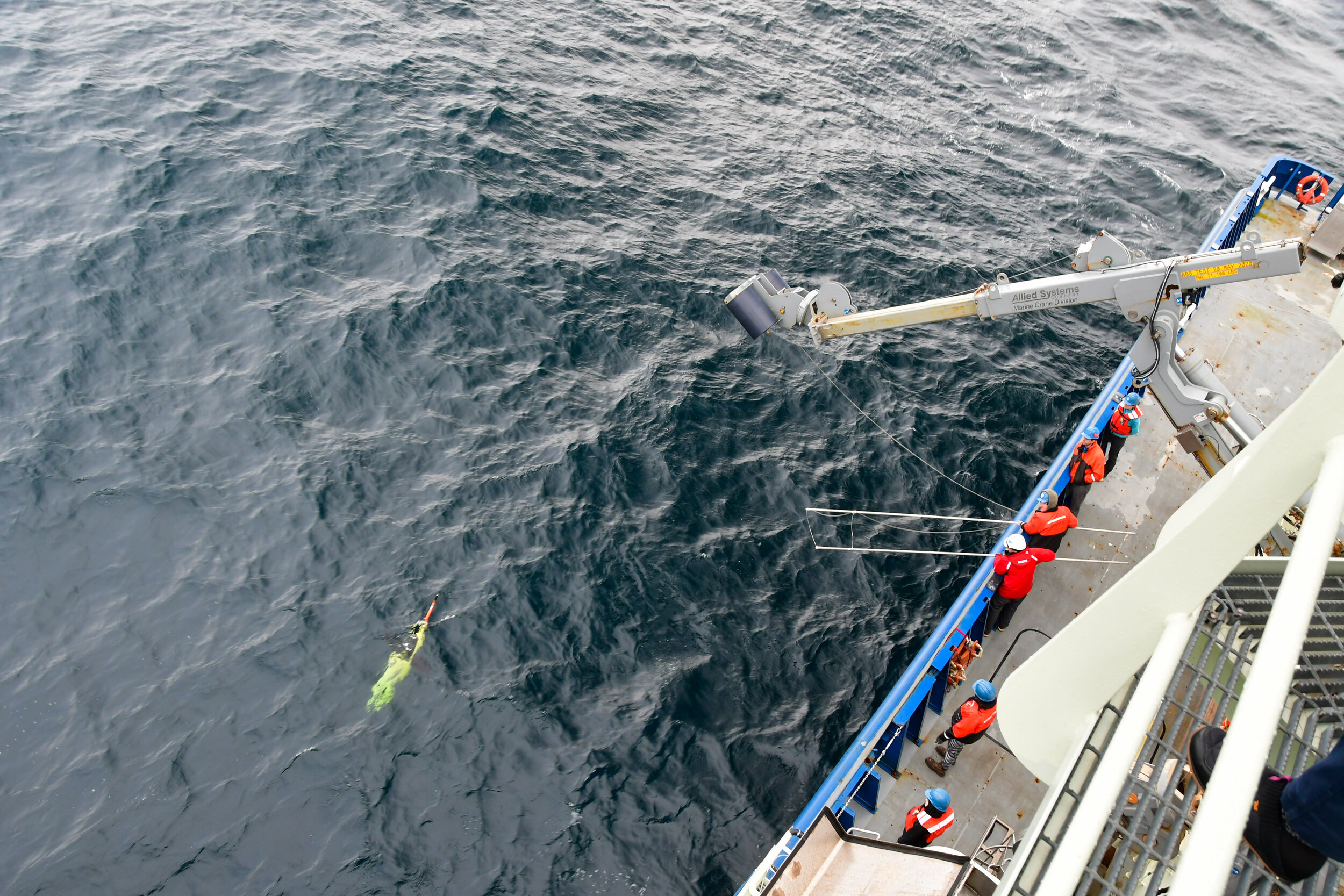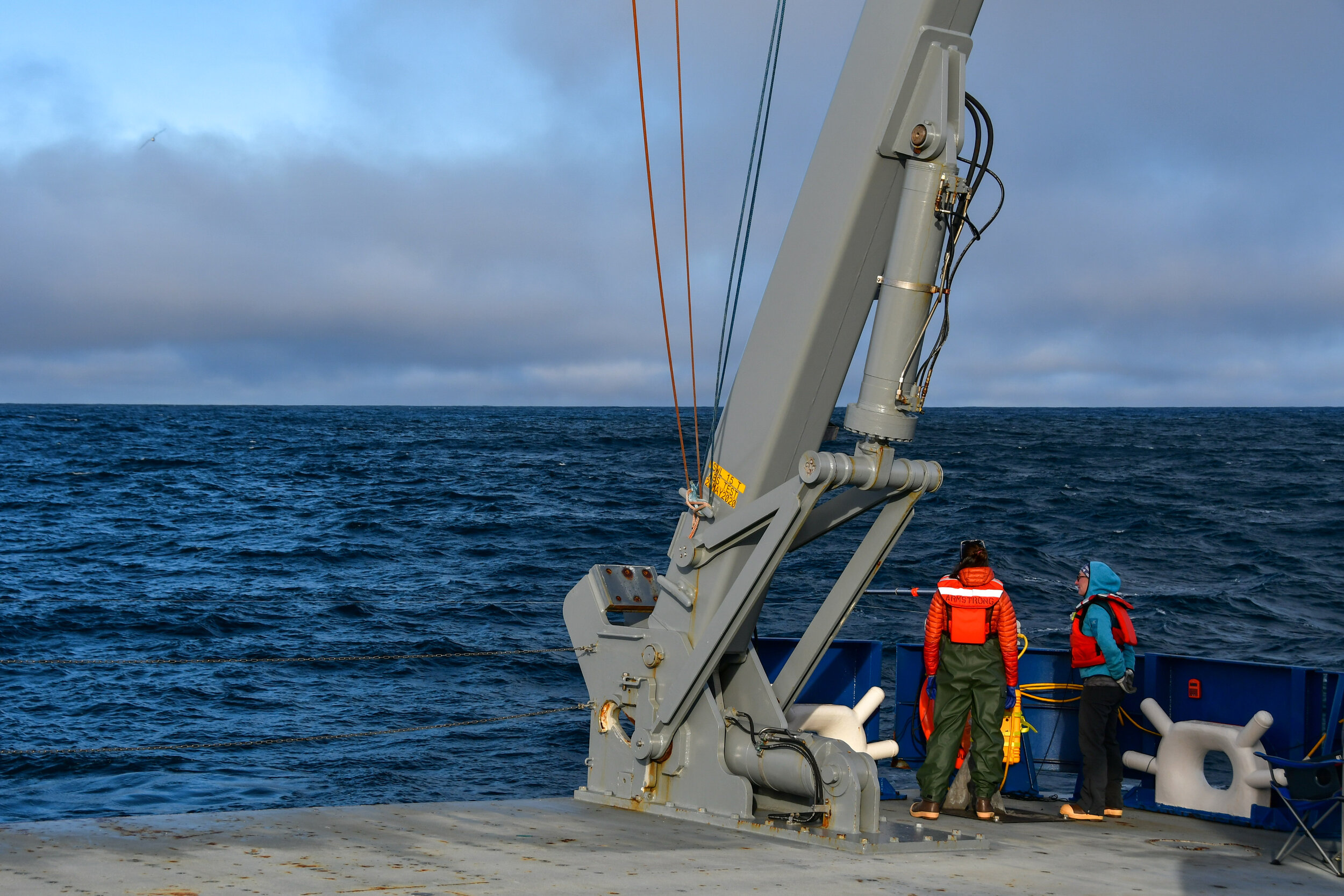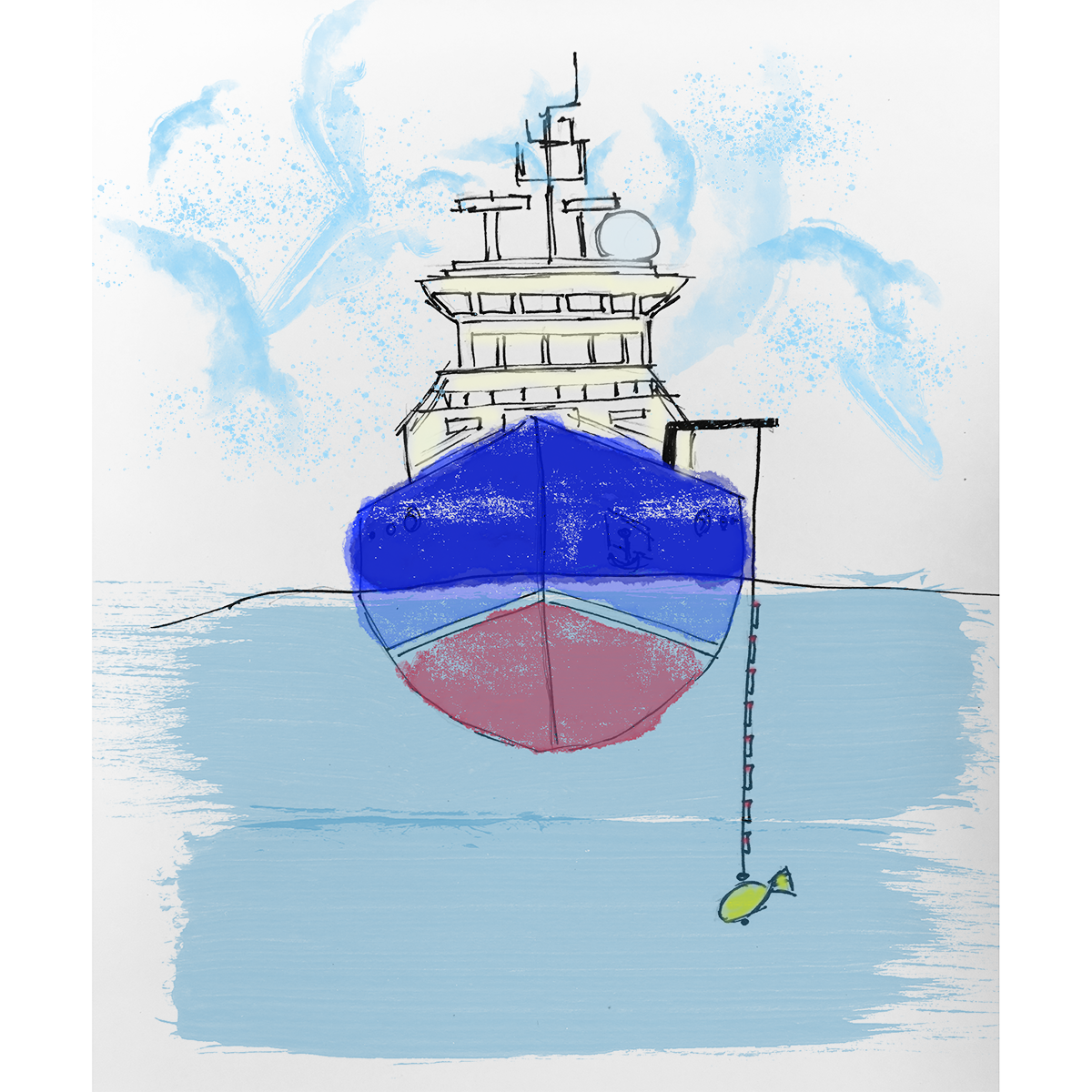For the third year in a row, a group of MOD scientists, engineers and students ventured into the far north, braving the fickle beast that is the North Atlantic ocean in November. Equipped with various MOD in-house developed toys, and joined by fabulous colleagues from multiple different institutions, the science party was on a mission to investigate what happens to the upper ocean under strong forcing from wind and waves.
With the 2023 cruise just being done, that wraps up three years of fieldwork for the Office of Naval Research funded project NORSE – Northern Ocean Rapid Surface Evolution. Read on to hear about some highlights from this cruise. More on NORSE can be found here, there are also blogposts from the previous years’ cruises in 2021 and 2022 on the MOD blog, as well as a story for the Scripps Explorations dispatch series, all written by our graduate student Kerstin. Our fieldwork this year was also picked up by the San Diego Union Tribune that featured a story on our chief scientist Jen MacKinnon.
The NORSE 2023 science party
The NORSE 2023 science party was the largest yet, 30 scientists, engineers, and students, including two STEMSeas students. We all met up in a cold and snowy Tromso and boarded the Norwegian ice-breaker R/V Kronprins Haakon. After loading all the gear onboard, we quietly slipped out of the shelter of the archipelago and fjords one early arctic morning and set course towards the Lofoten Basin Eddy.
Thanks to the splitting of a northward current, the Lofoten Basin is enclosed by the Norwegian Atlantic Frontal Current and the Norwegian Atlantic Slope Current. The shedding of vortices by the slope current help make the Lofoten Basin a hotspot for temperature and vorticity in the Nordic Seas and help contribute to the local climate. Previous NORSE cruises have focused on a particular vortex in the basin, the Lofoten Basin Eddy, a well studied semi-permanent anticyclonic feature in which we’ve deployed multiple sets of surface drifters. These drifters are non-recovered, current tracking instruments that send back their data via gps and help us investigate energy transfer from the wind to the ocean when there is background vorticity present.
Drifter deployment
Glider recovery
Glider back on board
Then we headed further west towards our favorite volcano, Mt Beerenberg on the island of Jan Mayen, where most of the focus was during this year’s cruise. Jan Mayen sits on the intersection of multiple basins and is a meeting point of several currents and water masses which makes it a perfect place to study what happens to water of different temperature and salinity when they meet and the atmosphere exerts its forces on the ocean. In the waters around this isolated Norwegian Island we performed various acoustic experiments with hydrophones and sound sources, we deployed the MOD in-house autonomous profiler system the Wirewalker and did a lot of ship-based profiling with our turbulence sensor package the epsilometer as well as the CTD/oxygen/chlorophyll package.
DBASIS buoy
Wirewalker in the water
Wirewalker prep
Deployment
Other groups on the cruise had multiple instruments that went in and out of the water too, such as SWIFTs (drifting instruments that can measure waves and wind among other things) and gliders (autonomous underwater vessels that can be piloted to glide around and measure things like temperature, salinity and turbulence)
Small boat ops
SWIFT deployment
SWIFT deployment
We spent also two full days recovering the four moorings that we put out last year. They came back covered in basket stars.
1 of 4 moorings back on board
Basket stars
The North Atlantic was cooperative giving us almost flat seas for much of the first two weeks. However, the light was running out. At latitude 70°N we saw the sun set behind the horizon for the last time on November 20th, not to be seen again until late January. But just as things were seeming to be a little too picturesque and we started to wonder if we’d actually get to see some of that forcing from wind and waves that NORSE is about, things picked up and we spent most of Thanksgiving holed up on the most leeward side of Jan Mayen while the wind was howling a steady 70 mph outside and a thin layer of ice slowly built up on the Kronprins Haakon. We decorated the lab with paper turkeys and held a ship wide ping pong tournament in the helicopter hangar. The final was a real nail biter between Italy and Norway. And yes, the ship has a helicopter hangar with a ping pong table.
The running joke amongst seagoing oceanographers is that when you say you’re going on a “cruise” people immediately think you’re going on vacation, and you have to explain that it’s a “research cruise”. Well, with heated bathroom floors, a 9th floor observation deck with reclining chairs, a sauna, and a massage chair in the library, the Kronprins Haakon was one of those ships where three weeks of working long days on a research cruise could, at least sometimes, feel a little like a vacation. The abundance of pretty views didn’t hurt either.
Last sunrise
Last sunset
Jan Mayen post storm
Aurora Borealis
Once the skies cleared up and Jan Mayen was once again visible in the faint glow of daylight (coming from the sun below the horizon, but we take what we can get) we did some last minute profiling and then picked up our last assets from the water before we pointed the bow towards Tromso again. Once in port the science party managed to both prove themselves on the karaoke stage and jump into 5°C/40F water by the downtown sauna before heading home. A worthy ending to a successful cruise.
And that concludes three years of fieldwork for the NORSE project.
Now begins the work of turning all the terabytes of data collected over the past years into research papers that will help the scientific community better understand the upper ocean’s response to strong forcing and how that impacts thermohaline patters, currents, acoustics, and energy transfer from the atmosphere to the ocean, as well as how that might play out in a changing climate. Coming to an oceanographic conference/symposium/journal near you soon…
With that we sign off for the last time: NORSE over and out.
Jan Mayen
(Really, you think we’d leave you without a silly joke or two?)
- Why did the pirate put tape on the squid?
He was afraid it was kraken!
- What do you call a Viking that doesn’t eat fish?
A Norvegan.
All photos and text by Kerstin Bergentz






























































